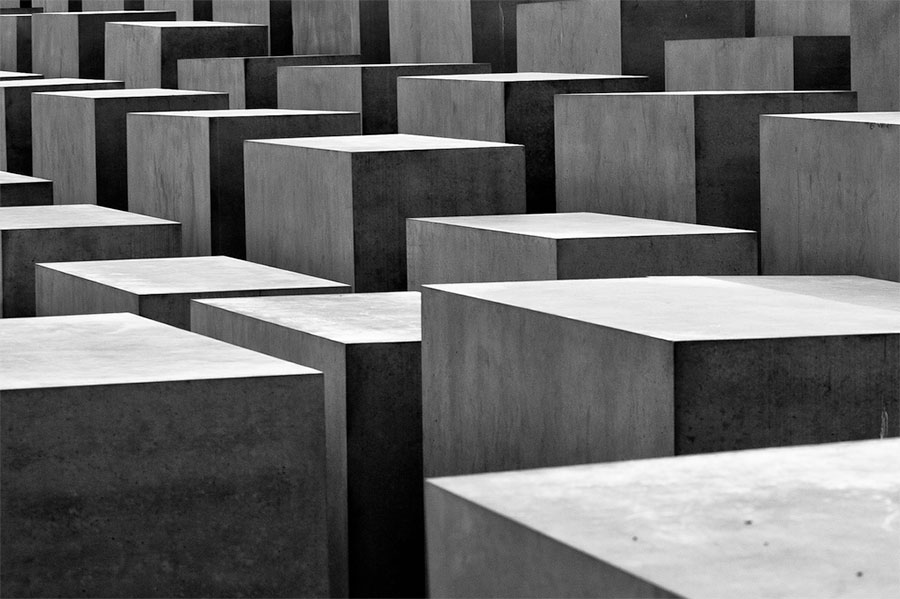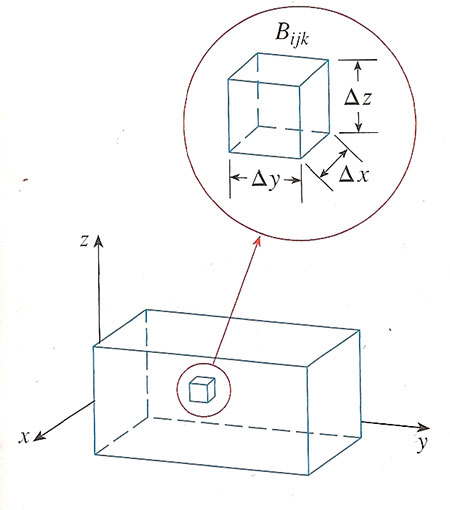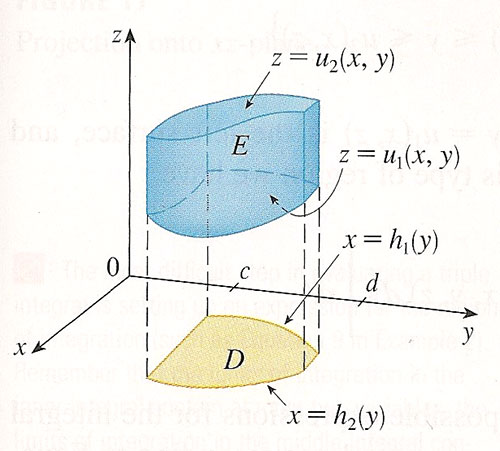Triple Integrals [11.7]



Dividing a box, $B$...
- $l$ equal slices $\perp$ to $\uv i$,
- $m$ equal slices $\perp$ to $\uv j$,
- $n$ equal slices $\perp$ to $\uv k$,
The volume of one little block is $$\Delta V = \Delta x \Delta y \Delta z.$$

And we can evaluate a triple integral by successive iterated integrals.

Order doesn't matter for a box integral, but one possibility is...
- Evaluate... $$A(y,z)=\int_a^b f(x,y,z)\,dx$$ while treating $y$ and $z$ as constants,
- $$B(z)=\int_c^d A(y,z)\,dy$$ while treating $z$ as constant,
- $$\iiint_Bf(x,y,z)\,dV=\int_r^s B(z)\,dz.$$
Integrating over a general bounded region, $E$
$u_1(x,y)$ and $u_2(x,y)$ are surfaces.
$h_1(y)$ and $h_2(y)$ are curves / arcs in the $xy$ plane.
 Extend the idea of manipulating the limits of the integrals to set up triple integrals over some general bounded 3D region, $E$, whose boundaries can be described in functional form, e.g.
$$\iiint_Ef(x,y,z)\,dV=
\int_{y=c}^d\int_{x=h_1(y)}^{h_2(y)} \int_{z=u_1(x,y)}^{u_2(x,y)}f(x,y,z)\,dz\,dx\,dy.$$
Now the order of evaluating integrals (from inside to outside) does matter.
Extend the idea of manipulating the limits of the integrals to set up triple integrals over some general bounded 3D region, $E$, whose boundaries can be described in functional form, e.g.
$$\iiint_Ef(x,y,z)\,dV=
\int_{y=c}^d\int_{x=h_1(y)}^{h_2(y)} \int_{z=u_1(x,y)}^{u_2(x,y)}f(x,y,z)\,dz\,dx\,dy.$$
Now the order of evaluating integrals (from inside to outside) does matter.
To find the volume of the solid, $E$, defined by these limits: $$V_E= \int_{y=c}^d\int_{x=h_1(y)}^{h_2(y)} \int_{z=u_1(x,y)}^{u_2(x,y)}\,dz\,dx\,dy$$ where $dx\,dy\,dz=dV$.
To Do
- 11.7 Volume problems